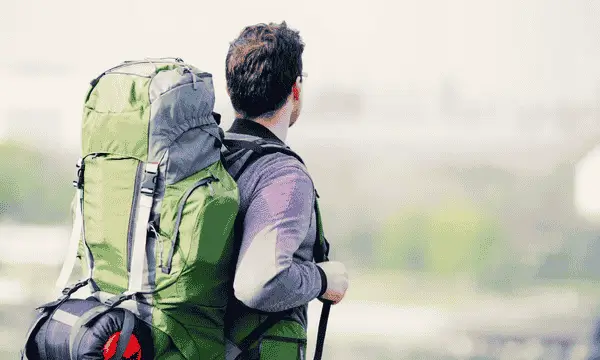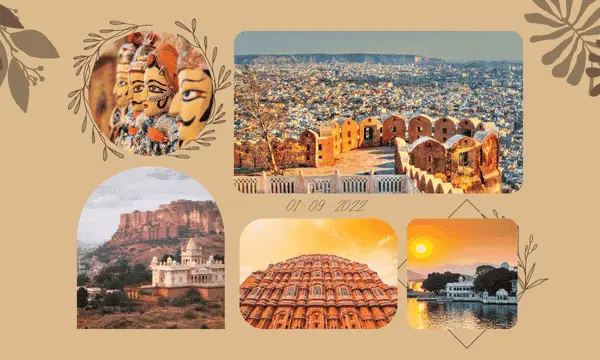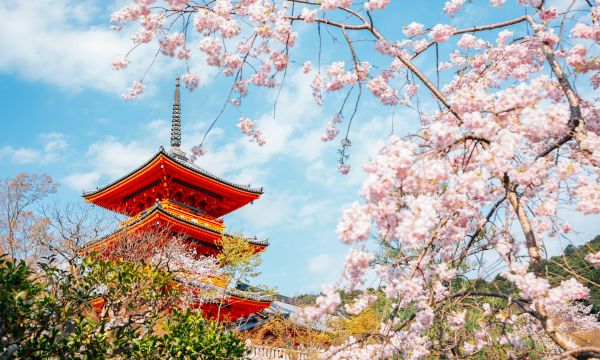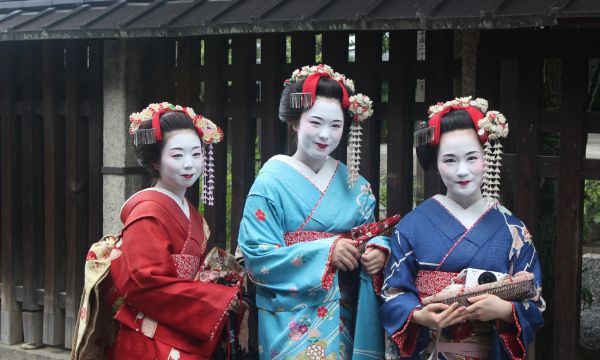Last updated on November 30th, 2024 at 07:57 pm
Backpacking in India offers a mix of culture, history, and natural beauty, but it can feel overwhelming for budget travelers. Don’t worry! This guide will help you explore this amazing country without spending too much.
Imagine standing on the busy streets of Delhi, where the air is filled with spices and stories. As you explore lively markets, old temples, and peaceful landscapes, an exciting adventure awaits you.
From the snowy Himalayas to the sunny beaches of Goa, India is full of treasures to discover. Each place has its own unique story, adding to your travel experience. Whether you’re tasting street food in Mumbai or haggling for silk scarves in Jaipur, backpacking in India on a budget doesn’t mean missing out on great experiences. Instead, it encourages you to be creative and resourceful. So, pack your bag, and let’s start this journey together, turning dreams into reality while keeping our costs low.
Also Read: 10 Hidden Gems in India You Must Explore In 2025
Show the relevant content
Toggle- Overview of Backpacking in India
- Best Regions for Budget Backpacking In India
- Essential Gear for Indian Backpackers
- Affordable Accommodation Options Across India
- Budget-Friendly Transportation Tips and Tricks
- Must-Try Local Foods on a Budget
- Free and Low-Cost Attractions to Explore
- Safety Tips for Backpackers in India
- Cultural Etiquette Every Backpacker Should Know
Overview of Backpacking in India
Backpacking in India is more than just traveling; it’s a deep experience of the country’s rich cultures, traditions, and foods. From the snowy mountains of Himachal Pradesh to the sunny beaches of Goa, each place shows a different side of India.
Backpackers need to be flexible when exploring busy cities and quiet villages, but they will enjoy unforgettable moments, like learning local secrets from street food vendors or watching artists perform traditional music in lively markets.
Traveling on a budget in India is not just cheap; it can be exciting and full of experiences. Travelers can stay in friendly guesthouses or homestays, where they can learn about everyday life. Public transport, like trains and buses, is affordable and offers beautiful views that change as you travel across different regions.
For those wanting to connect more deeply, there are many volunteer opportunities, from environmental projects to teaching English. These experiences allow travelers to give back while enhancing their journey through this vibrant country. Ultimately, backpacking in India becomes more than just exploring; it’s about finding connections and understanding. Itineraries may change with spontaneous invitations for chai with locals or visits to ancient temples, but these moments are what make travel special, reminding us that sometimes straying from the usual path leads us to the best experiences.
Best Regions for Budget Backpacking In India
When planning a budget backpacking trip in India, you can find many unique experiences without spending much. Start with Rajasthan, which is famous for its lively culture and beautiful buildings. Cities like Jaipur, Jodhpur, and Udaipur show royal history and offer affordable guesthouses and hostels full of character. You can explore local markets for authentic Rajasthani crafts at low prices.
Next, visit South India, especially Kerala and Tamil Nadu. You’ll enjoy peaceful backwaters, green tea plantations, and ancient temples while tasting delicious local food that won’t cost much. The transport system is budget-friendly, with buses and trains connecting even remote villages rich in culture.
Finally, check out the Northeast region, like Tripura or Meghalaya, where stunning landscapes remain untouched by mass tourism. Friendly locals often provide low-cost homestays that let you connect with their cultures. As you hike through misty hills or see beautiful waterfalls, you’ll find that some of India’s best adventures are very affordable.
Essential Gear for Indian Backpackers
When getting ready for a backpacking trip in India, choosing the right gear is important for a good experience. Start with a strong, lightweight backpack that has enough pockets to keep your items organized.
A waterproof cover is essential to protect your things from sudden rain, especially in places like Kerala or Himachal Pradesh during the monsoon. Choose backpacks with breathable straps and back panels for comfort during long walks in busy cities or quiet countryside.
Next, pack versatile clothes made from quick-drying, moisture-wicking fabrics. Layer your clothing since temperatures can change a lot from day to night, especially in hot deserts and cold mountains. Bring sturdy walking shoes that offer a good grip on rough paths and are comfortable for city exploration.
Pack light but smart by including multifunctional items, like a sarong, which can be used as a towel, shawl, or emergency blanket. Also, consider taking portable gadgets like solar chargers or power banks to keep your devices charged during remote hikes where electricity might not be available. With India’s diverse landscapes, these essentials will help you stay prepared and connected during your adventure.
Affordable Accommodation Options Across India
India offers many budget-friendly places to stay for all types of travelers. Hostels are popular in cities like Delhi and Mumbai, providing a lively atmosphere for meeting other backpackers. Many hostels offer cheap dorm beds and organize group activities and city tours to help you discover local attractions beyond typical tourist spots.
If you want a more authentic experience, try homestays or guesthouses run by local families in rural areas like Kerala or Rajasthan. These cozy places give you a glimpse into Indian culture and often serve meals made with fresh, local ingredients.
You can also use platforms like Couchsurfing to stay with locals for free, which helps you make meaningful connections during your travels. Don’t forget to check booking sites for deals on unique accommodations, such as treehouses in the Western Ghats or eco-lodges near wildlife parks.
Whether you choose a cozy room with beautiful views or a modern capsule hotel in a busy city, these budget options support sustainable tourism and create unforgettable experiences as you explore this diverse country.
Budget-Friendly Transportation Tips and Tricks
When traveling in India, public transportation is very helpful. Instead of just using taxis or expensive rideshares, try local buses and trains. Indian Railways has many options, like sleeper classes for overnight trips and second-class compartments for short rides. These choices save you money and show you the diverse lives of people in India.
If you want to explore cities on a budget, consider renting bikes or scooters. This gives you the freedom to go wherever you want and discover hidden spots that are not in the guidebooks.
Getting an Indian SIM card with data can also help. You can use apps like Ola and Uber to get cheaper shared rides during off-peak times. This flexibility allows you to travel smartly and meet locals along the way. Traveling in India doesn’t have to be expensive; be creative and enjoy your adventures.
Must-Try Local Foods on a Budget
When backpacking in India, you can enjoy local food without spending much. Street food is a great option, offering tasty dishes that reflect each region’s culture. Don’t miss the spicy samosas in Varanasi or the hot idlis with tangy chutney in Chennai. These meals are cheap and part of the local tradition. Eating where locals eat lets you try these delicious foods for just a few rupees, making your trip more enjoyable.
Visiting regional markets reveals many affordable treats. In Jaipur, try the famous ghevar, a honeycomb-like sweet served during festivals. In Delhi, enjoy parathas made fresh at popular spots like Paranthe Wali Gali. These markets showcase foods from different cultures at reasonable prices. As you explore these lively places, look for seasonal dishes; they are often cheaper and full of flavor, proving that you can eat well on a budget during your Indian adventure.
Free and Low-Cost Attractions to Explore
Exploring India on a budget reveals many free and low-cost attractions beyond typical tourist spots. You can visit lesser-known areas like the peaceful backwaters of Kerala or the colorful streets of Jaisalmer, where you can enjoy local festivals for free. Discovering community fairs or folk dance performances lets you experience the true spirit of Indian culture without spending money.
Don’t miss the beautiful architecture, like the ancient temples in Hampi, which often have little to no entry fees and tell fascinating stories. Many cities also have parks and nature reserves, offering hiking trails and picnic areas where you can relax in beautiful surroundings without spending much.
By choosing local markets and street food instead of expensive restaurants, you can enjoy delicious meals and connect with the daily lives of locals. This is a budget-friendly way to create lasting memories.
Safety Tips for Backpackers in India
Backpacking in India can be exciting, but safety is crucial. First, buy a good lock for your backpack. This protects your things from theft while you’re distracted and gives you peace of mind when you leave your bag unattended, even for a moment. Consider getting travel insurance that covers theft and medical emergencies to avoid financial problems if something unexpected happens.
Learn about local customs and cultural norms before visiting different areas. Knowing what gestures are respectful or offensive can help you handle social situations better and prevent misunderstandings. When choosing where to stay, pick hostels or guesthouses with strong safety reviews. Look for places with 24-hour reception and secure storage.
Finally, stay connected. Keep an offline map or download important apps to help you navigate without relying on public Wi-Fi, which can be risky. By being aware and prepared, you can make your trip through India both exciting and safe.
Cultural Etiquette Every Backpacker Should Know
When backpacking in India, knowing the local customs can make your trip much more rewarding. One key aspect is greetings. Saying Namaste with your hands together shows respect for the culture.
Personal space is different in India. In busy places, people stand close together, but be careful not to touch someone’s head, especially if they are older, as this is seen as disrespectful. When visiting religious sites, dress modestly by covering your shoulders and knees. It’s also polite to take off your shoes before entering homes or sacred places.
Talking to locals can greatly improve your experience. Ask about their daily lives or try speaking in their local dialect. This can create meaningful connections beyond simple transactions. By understanding and respecting these customs, you can discover hidden gems and enjoy authentic experiences away from the usual tourist spots.
Conclusion: Embrace the Journey, Save Money
As you think back on your backpacking trip in India, remember that each step is part of a bigger journey. This journey involves not just seeing different places but also growing and learning. Being open to surprises is key. Enjoy local street food instead of fancy meals, haggle at busy markets instead of shopping in boring malls, and share stories with other travelers. These experiences are more valuable than money can buy.
Having a budget-friendly mindset helps you connect with people and enjoy real experiences that create lasting memories. Saving money isn’t just about cutting expenses; it’s about investing in meaningful interactions with the people and cultures around you. Take the chance to explore hidden gems. These moments shape not only your travels but also who you become. By embracing both saving and exploration, you’re not just saving money; you’re collecting stories that will last a lifetime.

















